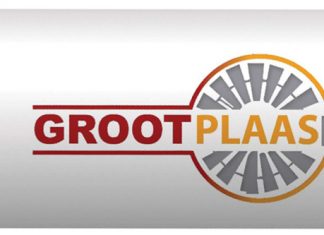September 2018
DR ASTRID JANKIELSOHN, ARC-Small Grain, Bethlehem
The aim of a management programme is to prevent pest infestations in a crop. Managing insect pests requires flexibility since insects are site, crop and area specific. Monitoring is the routine inspection for the appearance of insects.
The goals of monitoring are to locate, identify and determine the severity of pest infestations. This information can then be used to:
- Determine the success of a current management strategy and make adjustments accordingly.
- Predict population growth and distribution patterns of insects.
- Assess and predict future damage by an insect pest.
Information gained through monitoring will enable the producer to make sound management decisions.
For monitoring to be successful, the scout needs to know exactly what to look for:
- Insect feeding damage symptoms on the plant. The feeding damage of the insect is often more noticeable than the insect itself. Assess the severity of the damage. It is also important to determine the plant parts where most of the damage is located. The damage might be on a part of the plant where it will not affect the yield of the crop. It is also important to note the growth stage of the crop. Certain crops are more vulnerable at certain growth stages. The seedling stage of wheat, for instance, will be vulnerable for insect feeding damage and heavy insect infestations at this stage might affect the yield. Insect infestations after the flag leaf stage will, however, not influence the yield significantly.
- Determine what is causing the damage and whether the damage-causing insect is still present on the crop. Sometimes insects start feeding on the crop and cause initial damage and then move on or are killed by natural enemies (predators, parasitoids or pathogens) or environmental fluctuations. If the insect is still present, follow-up monitoring will be necessary.
- Determine the percentage infestation in the crop field and whether the infestation is in isolated patches or spread throughout the crop.
- Note other insects present in the crop field as well as their function in the crop ecosystem, such as herbivores on the crop or on weeds, predators, pollinators and decomposers.
- Record the environmental parameters such as temperature, wind, humidity, soil moisture and rainfall.
All these factors need to be considered carefully before a management decision is made. It is important to keep a dated record of all these observations in order to be able to predict patterns of insect colonisation and distribution throughout the growth season of the crop. This can be very helpful in predicting future patterns of infestation.
Advantages of a good monitoring system include:
- Early detection of damage. This will facilitate timeous action and prevention of further, possibly economic, damage.
- Controlling the pest effectively during the most susceptible stage of its life cycle.
- Save costs by deciding on the best management action. Often, when looking at all the observations, expensive chemical spraying might not be necessary. The cost of different management actions has to be weighed against the potential loss of yield ensuring maximum profit.
- Limit damage to the environment by unnecessary use of harmful chemicals.
- Enable target-specific management. Unless the pest is identified, the control programme may have the wrong pest as its target. Identification allows the treatment of the pest problem, while avoiding injury to non-target organisms.
- Identifying the effects of naturally present biological control agents. This means knowing which organisms are beneficial and determining how pests have been affected by them.
Assessing the efficacy of pest management actions that have been taken is a very important part of monitoring. An efficient monitoring programme will enable producers to prevent or minimise pest outbreak and economic damage to a crop and save costs due to unnecessary control.
 Producers with any queries can contact the author at 058 307 3431, 082 564 3795 or jankielsohna@arc.agric.za.
Producers with any queries can contact the author at 058 307 3431, 082 564 3795 or jankielsohna@arc.agric.za.
Publication: September 2018
Section: Focus on integrated pest control

















